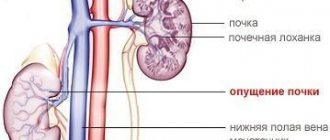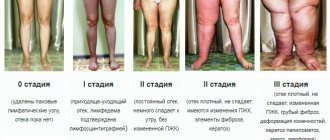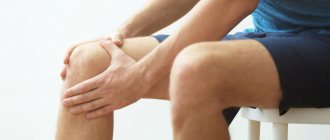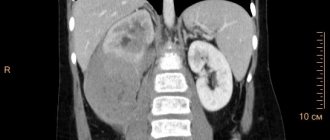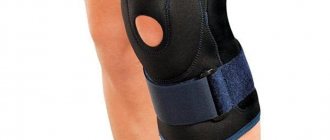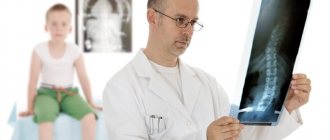In the 21st century, arterial hypertension remains an important medical and social problem, as it is fraught with complications that lead to disability, disrupt the quality of life and can be fatal.
The disease is being successfully treated by doctors at the Yusupov Hospital. If you have high blood pressure, you should consult a doctor immediately. Only timely and competent treatment promotes recovery.
For each patient, the Yusupov Hospital selects an individual treatment regimen depending on the primary disease, individual characteristics, the presence of contraindications and concomitant pathology.
Causes of the disease
Arterial hypertension is a disorder of the cardiovascular system, characterized by an increase in systolic blood pressure (the first digit on the tonometer) above 140 mm Hg.
Art. and/or diastolic (second digit) – above 90 mm Hg. Art. It can occur as an independent disease or result from another pathology. The most common is hypertension or essential hypertension, which develops independently, without obvious reasons. It occurs in 90% of patients with high blood pressure.1
Secondary or symptomatic hypertension is directly related to other diseases or factors that can be controlled.1 This form of the disease is usually suspected in young people under 30 years of age with high blood pressure.
The main causes of secondary arterial hypertension are2:
- Obstructive sleep apnea syndrome.
- Kidney diseases.
- Neoplasms of the adrenal glands – pheochromocytoma.
- Pathologies of the thyroid gland: thyrotoxicosis, hypothyroidism.
- Congenital abnormalities of the heart and blood vessels, including coarctation of the aorta.
- Primary hyperaldosteronism.
- Itsenko-Cushing syndrome.
- Side effects of medications such as: oral contraceptives, non-steroidal anti-inflammatory drugs, antiviral drugs.
Risk factors
There are a number of factors that increase the likelihood of developing hypertension. The most significant include:
- Age. The risk of high blood pressure increases with age, mainly after age 65.
- Hereditary tendency to arterial hypertension.
- Overweight.
- Physical inactivity, lack of physical activity.
- Smoking, including passive smoking.
- Excess salt and potassium-containing foods in the diet.
- Alcohol abuse.
- Chronic stress, frequent emotional stress and lack of sleep.
- Pregnancy.
- Early menopause.
- Heart rate exceeding 80 beats/min at rest.
Prevention of arterial hypertension
To prevent the development of arterial hypertension it is necessary:
- organize proper nutrition;
- avoid emotional stress and stress;
- use rational physical activity;
- normalize sleep patterns;
- monitor your weight;
- active rest;
- stop smoking and drinking alcohol;
- Visit your doctor regularly and get tested.
Arterial hypertension leads to disability and death. The disease is being successfully treated by doctors at the Yusupov Hospital. Treatment for this disease involves continuous use of medications to control blood pressure. Hypertensive crises and sudden changes in pressure should be avoided.
If you encounter this problem, call and the coordinating doctor will make an appointment with a cardiologist and answer all your questions.
What are the different degrees of hypertension?
Normal blood pressure is considered to be between 110/70 and 130/85 mm Hg. Art., which on average is the well-known 120/80 mm Hg. Art. With arterial hypertension, there is an increase in systolic blood pressure above 140 mm Hg. Art. and/or diastolic above 90 mm Hg. Art.
The degrees of hypertension are determined depending on the systolic (SBP) and/or diastolic (DBP) blood pressure (Fig. 1).
Figure 1. Degrees of hypertension in adults. Source: MedPortal, photo by cottonbro: Pexels
As a rule, at the first stage of development of hypertension, serious structural changes in the internal organs and structures of the body do not yet occur.
If hypertension continues to develop, over time, excessive blood pressure on the walls of the arteries will negatively affect both the blood vessels themselves and the target organs: the brain, retina, heart. The higher the pressure and the longer it remains uncontrolled, the greater the potential threat of decreased visual acuity, deterioration of cognitive abilities, heart pain, etc.
The most significant complications of arterial hypertension are:
- Myocardial infarction.
- Heart failure.
- Loss of visual acuity and blindness.
- Stroke.
- Dementia.
Hypertensive crisis is a complication of arterial hypertension in which blood pressure suddenly rises to 180/120 mmHg. Art. and more. In this case, direct damage to target organs occurs. This condition requires emergency medical care in a hospital setting.
Hypertensive crises
Hypertensive crisis is a state of individual significant increase in blood pressure in patients suffering from primary or secondary arterial hypertension, accompanied by the appearance or worsening of clinical symptoms and requiring rapidly controlled pressure to limit or prevent damage to target organs. It can be an exacerbation or complication of arterial hypertension, an indicator of inadequate therapy, a manifestation of drug withdrawal syndrome, the debut or the only manifestation of the disease.
Type 1 crisis (adrenal, neurovegetative) is manifested by an increase in systolic blood pressure, an increase in pulse pressure, tachycardia, extrasystole, and agitation. Type 2 crisis (water-salt, norepinephrine) has the following symptoms:
- a predominant increase in diastolic pressure with a decrease in pulse pressure;
- swelling of the face, legs, arms;
- a noticeable decrease in diuresis on the eve of a crisis.
To treat an uncomplicated crisis, doctors use the following drugs:
- nifedipine;
- captopril;
- carvedilol or other beta blockers;
- metoprolol;
- propranolol;
- furosemide;
- clonidine.
In case of a complicated crisis, the respiratory tract is sanitized, the patient is provided with oxygen, and venous access is made. The choice of antihypertensive drug is approached in a differentiated manner; it is administered intravenously. They quickly reduce the pressure, and then within 2-6 hours switch to oral medications, which reduce it to 160/100 mmHg. The patient is hospitalized in a specialized hospital.
Hypertensive cerebral crisis is a sudden increase in blood pressure to critical levels, which leads to impaired cerebral circulation. It is manifested by headache and other symptoms characteristic of liquor hypertension syndrome. It develops against the background of hypertension, atherosclerosis, pyelonephritis, glomerulonephritis, diabetic nephropathy, etc. In 50% of cases, hypertensive cerebral crisis occurs after stressful situations. It can be triggered by a sudden change in weather, overeating, hypothermia, or excessive physical activity.
Angiohypotonic hypertensive cerebral crisis develops against the background of a headache that is familiar and typical for hypertensive patients, which occurs in the form of a feeling of heaviness in the head or is localized in the occipital region. It intensifies with a body position that impedes venous outflow from the cranial cavity (bending, straining, coughing, lying down). Often the pain goes away when drinking coffee, strong tea or standing upright.
Hypertensive cerebral crisis begins with the spread of headache to the orbital area. In this case, patients complain of the appearance of pressure behind the eyeballs and on the eyes. A distinctive feature of angiohypotonic hypertensive cerebral crisis is its occurrence with a moderate increase in blood pressure (170/100 mm Hg). Then the pain rapidly intensifies within an hour and spreads throughout the head. Nausea and repeated vomiting appear, which brings some temporary relief.
Angiohypotonic hypertensive cerebral crisis is accompanied by autonomic reactions: tachycardia, increased sweating, wave-like breathing, and sometimes facial cyanosis. Then comes the late phase, which is characterized by the following symptoms: increasing lethargy, nystagmus, dissociation of tendon reflexes. During this period, blood pressure can be at the level of 220/120 mmHg. Art. or more, but sometimes it does not rise above 200/100 mm Hg.
Ischemic hypertensive cerebral crisis is observed much less frequently than angiohypotonic crisis. It is typical for hypertensive patients who tolerate increased blood pressure well and do not suffer from headaches. Often, ischemic hypertensive cerebral crisis develops against the background of very high blood pressure numbers, which may go beyond the tonometer scale.
Patients become overly energetic, overly emotional and outwardly too businesslike. Then they develop irritability, which is replaced by tearfulness and depression. They may start to behave aggressively. Due to the lack of criticism, patients themselves are not able to adequately assess their condition.
Subsequently, focal neurological symptoms appear:
- blurred vision (double vision or flickering “spots” in the eyes);
- sensitivity disorders (tingling, numbness);
- speech disorder;
- unsteady gait;
- vestibular ataxia;
- asymmetry of tendon reflexes.
A complex cerebral hypertensive crisis begins with clinical manifestations characteristic of the angiohypotonic variant of the course of cerebral crisis, but quite often occurs against the background of significantly increased pressure. As the crisis develops, focal symptoms appear, characteristic of the ischemic variant of the course of cerebral crisis.
Ischemic and mixed hypertensive cerebral crisis is an indication for hospitalization of the patient. Comprehensive treatment should include tranquilizing antihypertensive therapy, vasoactive drugs and symptomatic treatment.
The main way to prevent hypertensive cerebral crisis is adequate antihypertensive therapy for patients with arterial hypertension. If blood pressure is moderately elevated, work that requires heavy lifting, a fixed body position, or an inclined position should be avoided. There is no need to overcool your head or overexert yourself emotionally. For constipation, you need to follow a diet and take laxatives. If morning headaches occur regularly, it is better for the patient to sleep on a high pillow and take a long walk before bed.
In order to avoid a cerebral crisis when the headache intensifies, you need to warm your head with a hairdryer or a warm shower, massage the cervical-collar area, and drink strong tea. If you have an intense headache, it is recommended to take caffeine tablets or seduxen.
Differences between degrees and stages of hypertension
In clinical practice, several classifications of arterial hypertension are used simultaneously. Of key importance is the division of this pathology into degrees and stages of development.1
If the degree is determined depending on the pressure indicators, then the stage of the disease depends on the severity of target organ damage and the presence of clinical conditions associated with high blood pressure, diabetes mellitus and chronic kidney disease. There are 3 stages of arterial hypertension:
- Stage I: There is no end organ damage or associated clinical conditions, but there are associated risk factors. In addition to those previously mentioned, this also includes a number of laboratory indicators: lipid and blood sugar levels, uric acid and others.
- Stage II. There is asymptomatic target organ damage, determined by the results of additional examination and/or stage 3 chronic kidney disease and/or concomitant uncomplicated diabetes mellitus.
- Stage III. The presence of manifesting target organ damage and clinical conditions associated with hypertension, stage 4-5 chronic kidney disease or complicated diabetes mellitus.
Pulmonary hypertension
Pulmonary hypertension - what is it? Pulmonary hypertension is defined as a group of diseases that are characterized by a progressive increase in blood pressure in the pulmonary artery, which leads to right ventricular failure and is a cause of premature death. The disease cannot be diagnosed until the target organ (right ventricle) is affected. In clinical practice, it is actually possible to detect pulmonary hypertension at the stage of latent dysfunction of the right ventricle, manifested by dilatation of its cavity or hypertrophy of the walls, and, in the worst case, at the stage of right ventricular heart failure.
Cardiologists use a clinical classification of pulmonary hypertension. It can be idiopathic and hereditary. The latter form develops due to a mutation in the bone-derived protein receptor type 2 gene or a mutation in the activin-like kinase-1c gene and non-hereditary hemorrhagic telangiectasia. It may be caused by unknown mutations.
The disease also develops when taking certain medications. Pulmonary hypertension can be associated with connective tissue diseases, systemic diseases, HIV infection, dysmetabolic syndrome, etc.
The first symptom of pulmonary hypertension is shortness of breath, which increases with physical activity or paroxysmal nocturnal shortness of breath. Then a nonproductive cough, palpitations, chest pain, fainting or presyncope, increased fatigue or weakness, peripheral edema and heaviness in the right hypochondrium appear.
Diagnostic methods used include ECG, chest x-ray, functional study of the lungs and blood gas composition, D-Echo-CG, ventilation-perfusion scintigraphy, CT and MRI.
For idiopathic and associated forms of pulmonary hypertension, treatment is aimed at reducing the risk of worsening the disease. It includes:
- contraception for women of reproductive age;
- prevention of pulmonary infectious complications (vaccination against influenza and pneumococcal infection);
- supervised rehabilitation;
- psychosocial support.
Patients are advised to undergo dosed physical activity. For planned surgical interventions, it is recommended to give preference to epidural anesthesia. Drug treatment should be aimed at three main pathogenetic mechanisms: thrombosis, vasoconstriction and proliferation. Depending on the stage of the disease, doctors prescribe indirect anticoagulants and factor Xa inhibitors. Non-steroidal anti-inflammatory drugs should be avoided.
If there is a significant increase in pressure in the right atrium and the appearance of symptoms of right ventricular heart failure in the right ventricular heart failure, diuretics are prescribed. For hypoxemia at rest, oxygen therapy is indicated.
The most effective group of drugs for the treatment of arterial pulmonary hypertension are vasodilators, which include calcium antagonists and prostacyclin analogues.
Symptoms of stage 1 hypertension
Clinical manifestations of stage 1 hypertension often go unnoticed or are completely absent, since the body’s compensatory capabilities neutralize a slight increase in blood pressure.3 Because of this, the disease is often called the “silent killer.”
If high blood pressure levels persist for a long time, nonspecific symptoms may appear, including:
- Throbbing or pressing headache with the epicenter in the occipital region.
- Tinnitus and dizziness.
- Flashing "flies" before the eyes.
- Increased and rapid heartbeat.
- Nosebleeds.
- Poor exercise tolerance and shortness of breath.
- Swelling of the lower extremities, numbness in the legs.
When should you see a doctor?
In most cases, arterial hypertension is detected during a routine examination or seeking medical help for another disease or condition. Therefore, if there are risk factors, regular visits to your family doctor or primary care physician are recommended.
An unscheduled consultation or call to emergency medical services is required in the following situations:
- Decreased effectiveness of medications taken – situations where previously effective antihypertensive drugs no longer work.
- Increased blood pressure during treatment.
- The appearance of side effects from drug therapy.
- Deterioration of general condition while maintaining current blood pressure numbers.
- A sharp increase in blood pressure to more than 180/120 mmHg. Art., that is, the development of a hypertensive crisis.
- A sudden decrease in systolic or diastolic blood pressure of 30 mm Hg. Art. and more.
Consequences of violation
Why is this phase of hypertension dangerous? There are several complications, and complications that pose a real threat to life and health.
- If stage 2 arterial hypertension is diagnosed, the risk of stage 3 and stage 4 of the disease becomes as high as possible.
- The likelihood of developing a hypertensive crisis, which can result in a heart attack and stroke, also increases.
- The heart experiences constant stress, which leads to heart failure and other disorders.
- Almost every hypertensive patient whose disease has progressed to the second stage is diagnosed with atherosclerosis, in which the vessels are clogged with plaques that impede blood flow.
- The mechanism for the development of kidney and liver pathologies associated with poor vascular patency is triggered.
A common complication of hypertension is damage to the blood vessels of the eyes, which lead to deterioration of vision.
Stage 2 hypertension can develop over years (benign form) or rapidly progress to the next stage (malignant form). In the second case, people sometimes do not have time to take care of their health and stop the process, which leads to irreparable consequences, including death.
Modern diagnostic methods
24-hour blood pressure monitoring can help diagnose hypertension.
Photo: Minaart / Depositphotos The diagnosis is often made based on blood pressure readings obtained from tonometry and patient interview data.
In order to identify potential causes, as well as to assess risks to human health and select the most appropriate treatment regimen, a number of laboratory and instrumental studies are additionally carried out.
The examination program for a patient with arterial hypertension includes:
- Laboratory tests. This includes routine general blood and urine tests, as well as determination of a number of biochemical parameters, including: blood glucose, uric acid, sodium and potassium levels, total cholesterol and high and low density lipoproteins (HDL-C, LDL-C), serum creatinine blood followed by calculation of glomerular filtration rate (GFR).1
- Instrumental diagnostics. For patients with newly diagnosed arterial hypertension, in order to exclude white coat hypertension (increased pressure as a result of fear or “tremor” in front of the doctor), 24-hour blood pressure monitoring with simultaneous recording of an electrocardiogram (ECG) according to Holter is recommended. Also, if necessary, ECHO-CG, ultrasound diagnostics of the kidneys, duplex scanning of the vessels of the kidneys, head and neck, fundus examination (ophthalmoscopy), computed tomography or magnetic resonance imaging (CT or MRI) of the brain are performed.1
Diagnostic measures
A treatment regimen is drawn up by a cardiologist after a comprehensive examination, identifying pathologies in target organs, determining the form of the disease and the causes that led to the disorder. But the main sign remains the indicators of systolic and diastolic pressure. To determine these data, studies are carried out on:
- pressure stability throughout the day;
- degree of risk of developing complications of the disease;
- exclusion or confirmation of increased blood pressure as a complication of other ailments;
- identification of factors contributing to hypertension;
- identification of pathological changes in other organs and systems.
The first thing the doctor does is measure your blood pressure and give recommendations for self-diagnosis at home. For hypertension, blood pressure is measured 2-3 times a day for a week, recording all data in a special diary. This allows the doctor to make an accurate diagnosis and take into account the peculiarities of the course of the disease. The physical examination is complemented by the collection of data obtained from a patient interview.
Additionally, daily blood pressure monitoring is prescribed using a special device in a hospital setting. An obligatory part of the diagnosis is an electrocardiogram and ultrasound of the heart. The techniques help to see any type of tacharrhythmia and assess the thickness of the ventricular walls. If abnormalities in the functioning of the internal organs are suspected, a magnetic resonance therapy study is carried out, and ultrasonography is prescribed to determine the size of the kidneys.
Features of treatment. Conservative therapy
Treatment tactics depend on the results of previous diagnostics and laboratory parameters, as well as the risk of developing cardiovascular complications. However, in the conservative treatment of arterial hypertension of the 1st degree, a key place is occupied by lifestyle correction, which, if necessary, can be supplemented with pharmacotherapy.
Lifestyle changes: tips for patients with hypertension
The first and one of the most important aspects in the treatment of arterial hypertension and the prevention of complications is changing a person’s behavior and habits, aimed at eliminating or minimizing risk factors. Recommendations for patients with hypertension include7:
- Quitting the consumption of alcoholic beverages and tobacco products.
- Rational, balanced nutrition. In this case, preference should be given to fruits and vegetables, whole grains and fish, avoiding foods high in salt and trans fats.
- Normalization of body weight, treatment of obesity.
- Maintaining moderate physical activity, neck exercises, massages.
- Limit your intake of sugar and high carbohydrate foods.
- Avoiding frequent stress.
- Normalization of the daily routine, ensuring adequate sleep.
What foods should you not eat if you have high blood pressure?
Eating certain foods that increase blood pressure can be dangerous if a person already has hypertension. In this case, follow a special diet, excluding or limiting the use of:
- salts, seasonings and food additives containing sodium;
- strong tea, coffee containing caffeine;
- fatty, fried, spicy foods;
- pickles and canned foods;
- smoked meats;
- baked goods, sweets;
- fast food;
- sweet carbonated drinks;
- frozen semi-finished products: pizza, dumplings (may contain a lot of sugar, sodium, saturated fat to preserve taste);
- alcohol.
One of the tools for monitoring your condition is the so-called pressure diaries. They should record your systolic and diastolic blood pressure readings every day, adding comments regarding your well-being if necessary.
Also, do not miss follow-up visits to the doctor. In this way, the doctor will be able to monitor the effectiveness of the treatment prescribed and, if necessary, make adjustments or replace insufficiently effective medications.
How to measure blood pressure using a mechanical tonometer
In order to measure pressure with a mechanical tonometer (video 1), you need:
- sit in a comfortable position and relax, while your arm should be bent at the elbow joint and lie on a flat surface,
- remove the shoulder part of the arm from clothing and fasten the cuff on it (its lower edge should be 3-4 cm above the elbow bend),
- place a stethoscope (phonendoscope) on the inside of the elbow joint in the place where the pulse can best be felt,
- using a hand pump, start pumping air into the cuff,
- bring the pressure gauge needle to values exceeding the expected pressure by 30-40 mm. rt. Art. (for example, if the patient’s normal blood pressure is 135/90, then you can stop at 170),
- slowly release air from the cuff, waiting for tones to appear - these are the sounds of a heartbeat; their appearance marks the boundary of systolic pressure, and their disappearance marks the boundary of diastolic pressure. Simply put, if tones appeared at number 150 and disappeared at number 100, then the result is 150/100).
Video 1. How to correctly measure pressure with a mechanical tonometer.
Drug treatment
Drug therapy is usually prescribed if lifestyle changes have not normalized blood pressure within 3 months.1 Depending on the presence of structural changes in target organs and the risk of complications, one or more drugs may be used. The main means are:
- Angiotensin-converting enzyme inhibitors (ACE inhibitors): captopril, ramipril. They help relax blood vessels, blocking the formation of ACE, a chemical that constricts them.
- Angiotensin II receptor blockers: valsartan, losartan. These medications relax the blood vessels, blocking the action rather than the formation of ACE.
- Calcium channel blockers: verapamil, nifedipine. They relax blood vessels and can also slow down the heart rate. Often prescribed to elderly people.
- Diuretics. There are different classes of diuretics, including thiazide (hydrochlorothiazide), loop (furosemide), and potassium-sparing (triamterene).
- β-blockers: atenolol, bisoprolol. They reduce the strength and frequency of heart contractions, also dilating blood vessels.
Additional agents that can be used as adjuvant therapy in certain situations2:
- α-blockers: doxazosin, prazosin. Suppress nerve signals traveling to blood vessels, reducing the effect of natural chemicals that narrow them.
- Aldosterone antagonists: spironolactone, eplerenone. They block the action of aldosterone, which is responsible for maintaining salt and fluid in the body and can contribute to increased blood pressure.
- Vasodilators: hydralazine and minoxidil. They act directly on the muscles of the artery walls, preventing their contraction.
- Renin inhibitors: aliskiren. They slow down the production of renin, a kidney enzyme that triggers a chain of chemical reactions that increases blood pressure.
Important! When using drug treatment, you should clearly know the areas of application of a particular drug recommended by your doctor. Some medications should be taken regularly, regardless of blood pressure readings and even in situations where the numbers are within the normal range. Other medications are used only when necessary, for example, when there is a sudden increase in blood pressure and a deterioration in general condition. It is better to always have such drugs with you.
What to do during a hypertensive crisis?
Vivid symptoms of hypertension usually occur with a sharp rise in blood pressure - the development of a hypertensive crisis. When the pressure rises above 220/120 mmHg. Art. and/or the appearance of symptoms of a complicated crisis (severe weakness, nausea, vomiting, visual disturbances, acute headache, heart pain, impaired speech or consciousness, limitation of movements in the limbs), it is necessary to urgently call emergency help.
Emergency actions in this situation boil down to ventilating the room, maintaining bed rest, maintaining a calm environment, and taking antihypertensive drugs (Fig. 2).
Figure 2. First aid for hypertensive crisis. Source: MedPortal
Diastolic hypertension
The diagnosis of “isolated diastolic hypertension” is valid when the systolic value is 90 mm Hg. Increase in diastolic pressure to 90 mm Hg. does not pose a threat to a person who does not have a somatic pathology. But, if he suffers from diabetes, kidney disease, obesity, atherosclerosis, thyroid adenoma, or has previously suffered a heart attack, increased diastolic pressure is a sign of impending heart problems. Complications can only be avoided with adequate treatment of the underlying pathology.
People who have elevated diastolic pressure numbers and do not have concomitant pathologies are recommended to control their blood pressure and change their lifestyle:
- regulate sleep quality;
- do not drink red wine;
- limit the number of cigarettes smoked per day;
- avoid stress;
- eliminate salt from the diet;
- Healthy food;
- maintain normal weight;
- do physical exercise or yoga.
In the presence of diastolic hypertension, the following complications are possible:
- subarachnoid hemorrhage;
- congestive heart failure;
- abdominal aortic aneurysm;
- chronic renal failure;
- dementia;
- Eitzheimer's disease.
When diastolic hypertension occurs, hospital treatment is necessary if persistently high diastolic pressure is present. The underlying disease is treated, for example, surgical correction of aortic valve disease. Doctors individually prescribe medications for hypertension. The following tablets for hypertension are used:
- diuretics (lasix, furosemide);
- beta-blockers (anaprilin, nebilet);
- calcium channel blockers (cinnarizine);
- ACE inhibitors (captopril);
- angiotensin II receptor blockers (yuloctran).
Doctors at the Yusupov Hospital do not recommend using medications without a prescription from a cardiologist, as this is extremely dangerous. Treatment of isolated diastolic hypertension should be adequate and continuous. Hypertensive crises and sudden changes in blood pressure should be avoided.
Folk remedies against hypertension
Ginger tea is beneficial for people with high blood pressure.
Photo: jcomp - ru.freepik.com In addition to drug therapy, traditional methods of treatment can be effective adjuncts. They include a variety of tinctures and decoctions from various plants, roots, leaves or berries. The following have a proven antihypertensive effect:
- Ginger tea.
- Ginseng infusions and teas.
- Foot compresses with apple cider vinegar.
- Decoctions with sunflower seeds.
- Pomegranate juice.
- Dark chocolate (containing at least 60-70% cocoa, in moderation) and cocoa.
- Celery juice.
- Garlic.
- White mistletoe decoction.
- Dietary supplements or foods that increase nitric oxide or dilate blood vessels (vasodilators), such as: cocoa, coenzyme Q10, L-arginine.
- Omega-3 fatty acids found in oily fish, high fish oil supplements and flax seeds.
Various procedures can also help reduce high blood pressure, including massage courses for the back and collar area, contrasting water procedures for the feet and hands, etc.5, 6
Important! Traditional medicine cannot be the only method of treatment. Also, many medicinal plants contain biologically active substances that can cause adverse reactions. Therefore, before using them, you should definitely consult a doctor.
Forecast
With arterial hypertension of the 1st degree, as a rule, it is possible to avoid a further increase in blood pressure without the use of pills - by eliminating risk factors and changing a person’s lifestyle.
However, sometimes it is impossible to do without appropriate antihypertensive therapy and drug treatment. Taken together, following simple rules of behavior and regularly taking pills allows you to most effectively control the condition and prevent the development of serious complications such as myocardial infarction or stroke.
Treatment of hypertension at the clinic “Mom, Dad, Me”
At the first signs of increased blood pressure, we recommend that you contact a cardiologist at one of the branches of the “Mom, Dad, Me” family clinic network, located in Moscow. Our advantages:
- reception of adults;
- performing the most important diagnostic studies - ECG, EchoCG, HM ECG;
- if myocardial infarction is suspected, urgent determination of troponins in the blood;
- in-depth laboratory diagnosis of metabolic disorders aggravating the course of hypertension;
- development of an individual treatment and observation plan;
- affordable prices for services in our clinic.
Reviews
Good clinic, good doctor!
Raisa Vasilievna can clearly and clearly explain what the problem is. If something is wrong, she speaks about everything directly, not in a veiled way, as other doctors sometimes do. I don’t regret that I ended up with her. Anna
I would like to express my gratitude to the staff of the clinic: Mom, Dad, and me. The clinic has a very friendly atmosphere, a very friendly and cheerful team and highly qualified specialists. Thank you very much! I wish your clinic prosperity.
Anonymous user
Today I had a mole removed on my face from dermatologist I.A. Kodareva. The doctor is very neat! Correct! Thanks a lot! Administrator Yulia Borshchevskaya is friendly and accurately fulfills her duties.
Belova E.M.
Today I was treated at the clinic, I was satisfied with the staff, as well as the gynecologist. Everyone treats patients with respect and attention. Many thanks to them and continued prosperity.
Anonymous user
The Mama Papa Ya clinic in Lyubertsy is very good. The team is friendly and responsive. I recommend this clinic to all my friends. Thanks to all doctors and administrators. I wish the clinic prosperity and many adequate clients.
Iratyev V.V.
We visited the “Mama Papa Ya” Clinic with our child. A consultation with a pediatric cardiologist was needed. I liked the clinic. Good service, doctors. There was no queue, everything was the same price.
Evgeniya
I liked the first visit. They examined me carefully, prescribed additional examinations, and gave me good recommendations. I will continue treatment further; I liked the conditions at the clinic.
Christina
The doctor carefully examined my husband, prescribed an ECG and made a preliminary diagnosis. She gave recommendations on our situation and ordered additional examination. No comments so far. Financial agreements have been met.
Marina Petrovna
I really liked the clinic. Helpful staff. I had an appointment with gynecologist E.A. Mikhailova. I was satisfied, there are more such doctors. Thank you!!!
Olga
Sources
- Russian Cardiological Society. Clinical guidelines “Arterial hypertension in adults”, 2021.
- High blood pressure (hypertension). Mayo clinic. 2021.
- T. V. Ashcheulova, T. N. Ambrosova, V. I. Smirnova. “The main symptoms and syndromes of hypertension and symptomatic arterial hypertension: method. decree. for students” / comp. – Kharkov: KhNMU, 2021. – 32 p.
- Tabassum N, Ahmad F. Role of natural herbs in the treatment of hypertension. Pharmacogn Rev. 2011;5(9):30-40.
- Givi M. Durability of effect of massage therapy on blood pressure. Int J Prev Med. 2013;4(5):511-516.
- Mohebbi Z, Moghadasi M, Homayouni K, Nikou MH. The effect of back massage on blood pressure in the patients with primary hypertension in 2012-2013: a randomized clinical trial. Int J Community Based Nurses Midwifery. 2014;2(4):251-258.
- Marjorie Hecht "Types and Stages of Hypertension". Healthline. 2019.

